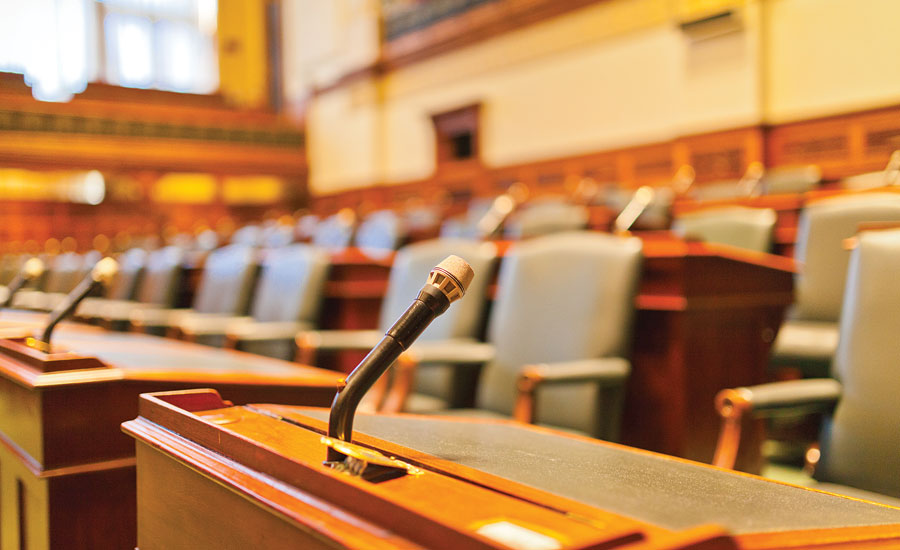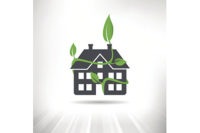I have realized how our country should treat terrorists that have been captured — subject them to sitting through the ICC Energy Conservation Code hearings.
But then again, the Geneva Convention probably would rule such as torture, as well as cruel-and-unusual punishment. That is how it felt after four days of the ICC Energy Conservation Code hearings held in October in Kansas City, Mo.
There were 238 code changes considered to the residential and commercial section of the IECC. However, it took four days of testimony to get through all the proposals. On Day 2, the hearings went until 12:30 a.m., and on Day 3 they went to 11:20 p.m.
As can be imagined, the hearings were filled with energy geeks. That’s the term they use; it is not intended to be demeaning. One thing our energy colleagues don’t understand is you don’t have to beat an issue to death during testimony. But, they never seemed to figure that out. They would rather hear themselves speak than spare the people in the audience.
Cards on the table
A number of issues impacted the plumbing and mechanical engineering profession. Commissioning of systems was a hot topic. One proposal would remove the acceptance of a professional engineer or licensed architect to perform commissioning. Anyone doing commissioning would have to be certified to an ISO/IEC standard. Fortunately, the code change was soundly defeated.
Another commissioning issue would require the replacement of any water heater, boiler or air handler to be subjected to commissioning. Can you imagine requiring an engineer to be present when a plumber replaces a water heater? It sounds so ridiculous that you can’t imagine anyone getting up to support such a measure. However, everyone had to sit through an explanation of why the commissioning of a water heater replacement would save energy. The testimony made no sense and the code change was rejected.
Some of the plumbing changes dealt with water conservation. Currently, water conservation is regulated in the plumbing code. However, the energy geeks have been unable to gain approval of changes to the plumbing code to lower the flow rates for fixtures, so they proposed changes to the IECC to add water-conservation requirements for lavatories and showers.
An appeal was filed to the ICC Board of Directors regarding the water-conservation code changes. The board added a comment to the code changes stating that regardless of the code-change results, the board would decide after the hearing which code should be regulating water conservation.
The first change would require lavatories in dwelling units to have a maximum flow rate of 1.5 gpm. The plumbing code currently restricts the flow rate to a maximum of 2.2 gpm. The supporting documentation was anecdotal and no studies showed any energy savings. Of course, the energy geeks didn’t think that was correct. They were convinced there would be energy savings. The membership rejected the code change.
The next water-conservation code change was to restrict the shower flow rate to 2 gpm for both commercial and residential buildings. Unfortunately, the code change was discussed at 10:30 p.m. After dinner, most of the voting members did not return to the hearing. The resulting crowd was filled with energy diehards. Hence, the code changes were approved. The change will now appear on the electronic voting of the ICC membership.
The following day, the code change for commercial lavatories was addressed. There was a more favorable audience present. When it was pointed out that one of the public comments would allow public lavatories to have three times the flow rate of the plumbing code, that didn’t seem to get through to the energy geeks. They were convinced they were right and continued to testify as to why the IECC should regulate water conservation. The code change was defeated by the membership.
Going the distance
Another issue on plumbing was a proposal to require hot-water recirculation in one- and two-family dwellings, depending on the distance a fixture is located from the water heater. The code change included a table that listed the distances based on the size of the dwelling unit. The distance required was to be drawn as a direct line on the plans.
This was another change that was not approved during last year’s plumbing code hearings. However, the plumbing proposal was not duplicated. Rather, a simplistic approach was proposed. While the concept is valid, the proposal was miserable. The proponents would have been better served if they had submitted the proposal from last year’s plumbing code cycle. The membership voted to reject the code change.
By the time the hearings reached the International Fire Code, they were hours behind schedule. Only about 25 changes were considered on the fire code before dinner Saturday. As expected, there was a very small crowd returning after dinner. To make matters worse, the Chicago Cubs were playing in Game 6 of the National League Championship Series with the chance to go to the World Series.
The first few votes after dinner had a total of 50 people voting, which is perhaps one of the lowest vote totals for any fire code hearing. When the discussion on Group A2L refrigerants took place, it seemed as if the 50 voting code officials would do OK. The first code change dealt with the use of A2L refrigerant in machinery rooms.
A lot of the discussion centered on the amount of ventilation required for the machinery room. It was brought out that the table in the proposed change was wrong. However, the code change included a reference to ASHRAE 15. Hence, the table could be ignored. The change was approved even with a table that wasn’t completely accurate.
The next code change on A2L refrigerants was to allow the use of the refrigerants in direct systems for comfort cooling, provided the units were listed. The International Mechanical Code restricts the use of any A2 or A3 refrigerant, including A2L, to 6.6 lb. or 3 kg. That is enough refrigerant to run a very small system.
Since the Fire Code Committee recommended disapproval, the first vote required the overturning of the committee’s recommendation. No one spoke against the overturning of the vote, so it appeared to be a slam dunk. But when the vote was taken, the motion to disapprove was 28 to 22. As a result, the 2018 ICC codes will not recognize the use of A2L refrigerants in direct systems for comfort cooling.
The vote on that Saturday evening will put ICC at a major disadvantage. Neither the International Mechanical Code nor the International Fire Code will address the use of Group A2L refrigerants in direct systems. However, the IAPMO Uniform Mechanical Code appears to be moving forward with A2L requirements. So for the 2018 codes, the IAPMO Uniform Mechanical Code will be a more up-to-date document than the ICC International Mechanical Code regarding efforts to increase the use of low global warming potential refrigerants.
When you think about it, it is somewhat amazing ICC allows 28 diehard members to set them back on recognizing new refrigerant technology. This points to some of the problems ICC still has with its process. As technology and standards move forward for Group A2L refrigerants, ICC is stuck in a quagmire.
This article was originally titled “ICC energy code torture” in the December 2016 print edition of PM Engineer.



